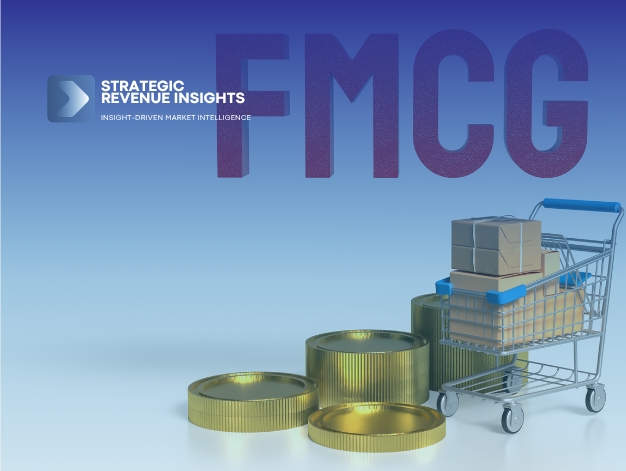As global demand for convenience, hygiene, and sustainability intensifies, FMCG companies are reimagining their packaging strategies to remain relevant and competitive. According to the newly published Fast Moving Consumer Goods FMCG Packaging Market Report by Strategic Packaging Insights, the FMCG packaging market is entering a critical phase of transformation, with innovation and environmental consciousness defining the next decade of growth.
Market Trends: Shifting Consumer Demands and Industry Adaptation Three major trends are reshaping the FMCG packaging sector. First, consumer preference for eco-conscious packaging has escalated. A growing segment of customers now seeks recyclable, biodegradable, and reusable options—pressuring manufacturers to overhaul their legacy systems. Second, convenience remains king. Single-serve packs, resealable closures, and ergonomic designs are becoming more prevalent to meet on-the-go lifestyles. Third, aesthetics and brand differentiation are vital. Bold colors, minimalistic designs, and storytelling on the pack itself have become crucial to capturing consumer attention in overcrowded aisles.
Retail and e-commerce are converging, prompting hybrid packaging solutions that must be durable for shipping yet visually appealing for shelf display. The ability to integrate functionality with visual appeal is now a competitive imperative. The rise of private labels, direct-to-consumer (DTC) models, and digitally native brands is intensifying the demand for cost-efficient, sustainable, and agile packaging systems.
Technological Advancements: Smart Packaging and Material Innovation Take Center Stage Technology is a driving force in modernizing FMCG packaging. Automation in manufacturing lines is improving scalability and reducing human error. In parallel, smart packaging technologies—including QR codes, Near Field Communication (NFC), and thermochromic inks—are creating interactive user experiences while enhancing traceability and safety.
Material innovation is another cornerstone of advancement. Flexible packaging formats using mono-materials are gaining traction due to easier recyclability. Edible and dissolvable films, once conceptual, are now being prototyped for niche applications. High-barrier films, compostable laminates, and lightweight PET alternatives are evolving quickly to match the performance of conventional plastic while minimizing environmental impact.
Moreover, artificial intelligence and machine learning are enabling predictive maintenance in packaging machinery and optimizing supply chain efficiencies. Real-time analytics from packaging lines are helping businesses reduce downtime, track performance, and swiftly adapt to SKU variations.
Sustainability Challenges: Confronting the Environmental Imperative The FMCG packaging sector is under intense scrutiny for its environmental footprint. Single-use plastics continue to dominate despite their known ecological drawbacks. According to the Ellen MacArthur Foundation, only 14% of global plastic packaging is collected for recycling, with the rest ending up in landfills, incinerators, or marine ecosystems.
In response, companies are setting ambitious sustainability targets. Unilever has pledged to halve its use of virgin plastic, while Nestlé and PepsiCo are investing in circular packaging systems. However, the transition is fraught with challenges. Biodegradable materials often require specific industrial composting conditions not available in many regions. Recyclable packaging can be compromised by food contamination or poor consumer sorting habits.
Governments are stepping in. The European Union’s Packaging and Packaging Waste Regulation (PPWR) and Extended Producer Responsibility (EPR) programs worldwide are compelling companies to internalize the environmental costs of their packaging. These policies are accelerating the shift towards eco-design principles, lifecycle assessments, and sustainable material sourcing.
Market Analysis: Competitive Landscape and Growth Projections The global FMCG packaging market is expected to surpass USD 1.1 trillion by 2033, growing at a compound annual growth rate (CAGR) of approximately 5.3% from 2025, as per Strategic Revenue Insights. Asia Pacific currently leads in volume due to population density and rapid urbanization, while North America and Europe dominate in value due to premiumization and higher sustainability standards.
Key players include Amcor plc, Mondi Group, Berry Global Inc., Smurfit Kappa Group, Tetra Pak International S.A., Sealed Air Corporation, and Constantia Flexibles. These firms are investing in R&D, vertical integration, and digitalization to enhance resilience and responsiveness.
Mergers and acquisitions are also reshaping the competitive landscape. For instance, Amcor’s acquisition of Bemis and Sealed Air’s venture into automated packaging reflect strategic shifts towards scale and digital capability. Niche players are gaining ground by offering hyper-local, sustainable, or custom-packaging solutions tailored to DTC brands.
Future Outlook: Toward a Digitally Integrated, Circular Economy The future of FMCG packaging lies at the intersection of digital transformation, circularity, and consumer empowerment. Regulatory tightening will push brands toward fully recyclable, refillable, or reusable packaging formats. Advanced robotics and modular packaging lines will support SKU proliferation and personalization. Lifecycle transparency—enabled through blockchain and digital twins—will give consumers deeper insights into product origin and impact.
Meanwhile, the adoption of refill stations, subscription-based delivery models, and minimalist packaging for digital-native brands will expand, especially in developed economies. Emerging markets will continue to focus on cost-efficiency, with a gradual move toward sustainable formats as infrastructure and consumer awareness improve.
In design, the shift toward “invisible packaging”—where the packaging is minimal, secondary, or composts seamlessly—will gain momentum. Meanwhile, AI-driven design optimization and 3D printing for rapid prototyping will compress time-to-market and enable bespoke packaging at scale.
Conclusion: Packaging as the Cornerstone of FMCG Evolution In a landscape characterized by volatility, innovation, and environmental urgency, packaging is no longer an afterthought—it is a strategic differentiator. The FMCG packaging industry is evolving from linear supply chains to dynamic, circular ecosystems enabled by technology, driven by data, and inspired by sustainability. Stakeholders across the value chain—from manufacturers and retailers to regulators and consumers—are co-architecting the future of packaging.
For a deeper dive into current developments and emerging opportunities, visit Strategic Packaging Insights, a trusted resource for market intelligence, competitive benchmarking, and innovation tracking across the FMCG packaging spectrum.
Media Contact: Strategic Packaging Insights – A Trade Name of SRI Consulting Group Ltd Corporate Headquarters: Suite 10, Capital House, 61 Amhurst Road, London, United Kingdom E8 1LL Phone: +44 7877 403352 Email: sales@strategicpackaginginsights.com Website: www.strategicpackaginginsights.com
Media Contact
Company Name: Strategic Packaging Insights
Contact Person: Shreyas
Email: Send Email
Phone: +44 7877 403352
Address:Suite10 Capital House 61 Amhurst Road, E8 1LL
City: London
State: London
Country: United Kingdom
Website: https://www.strategicpackaginginsights.com

